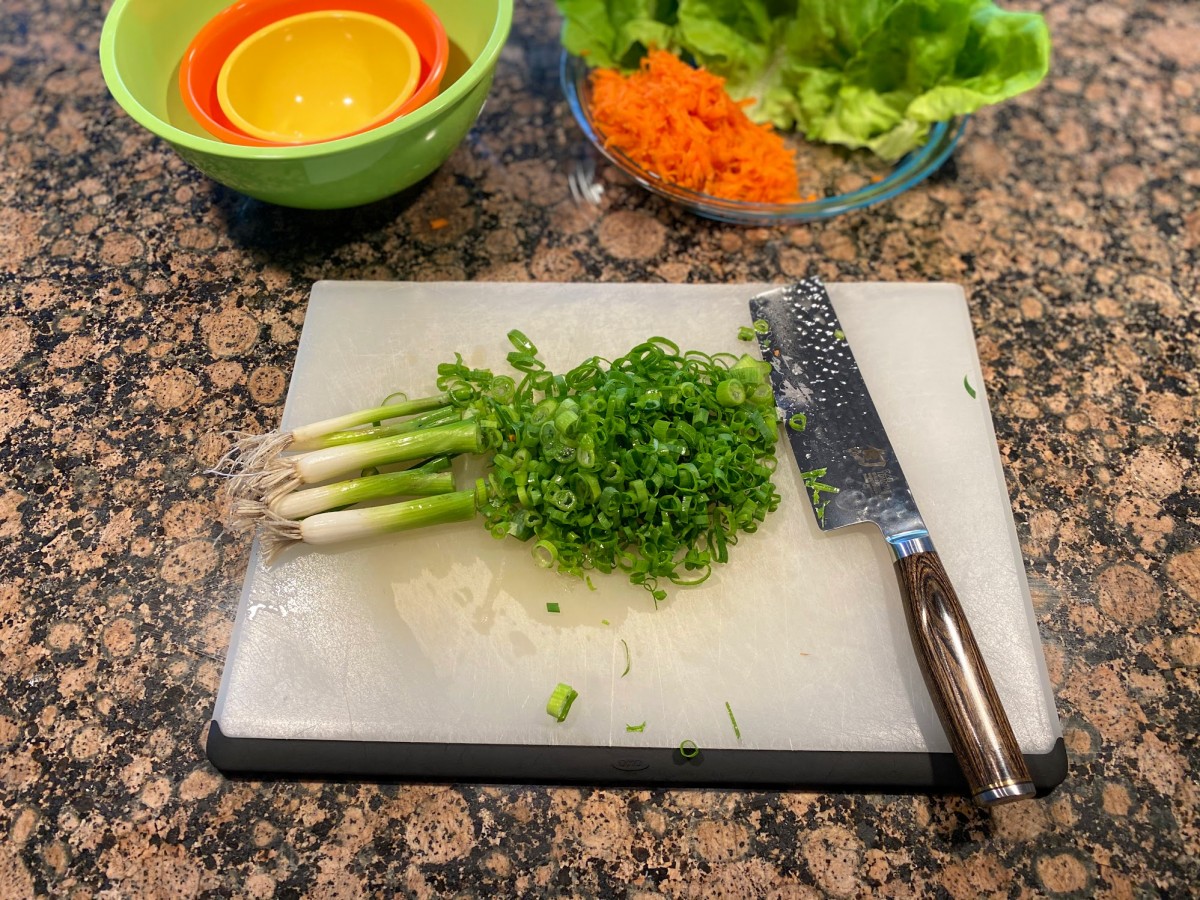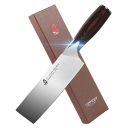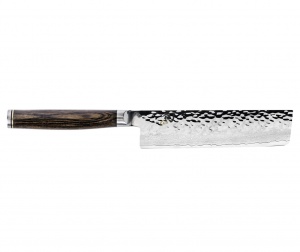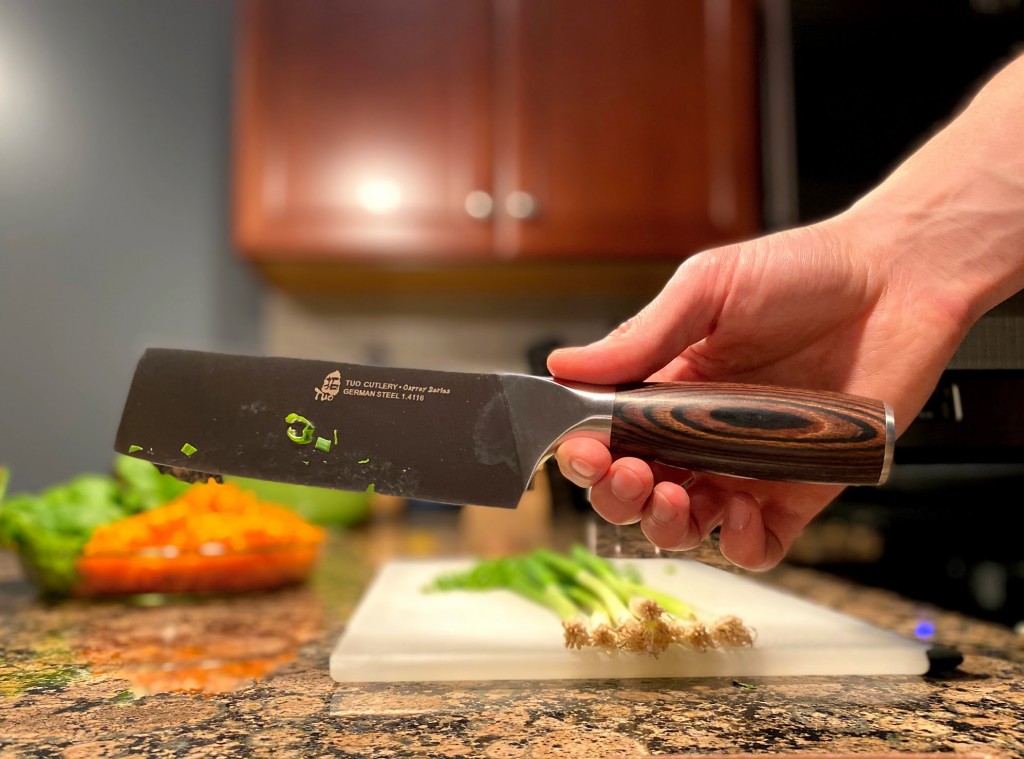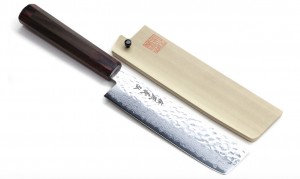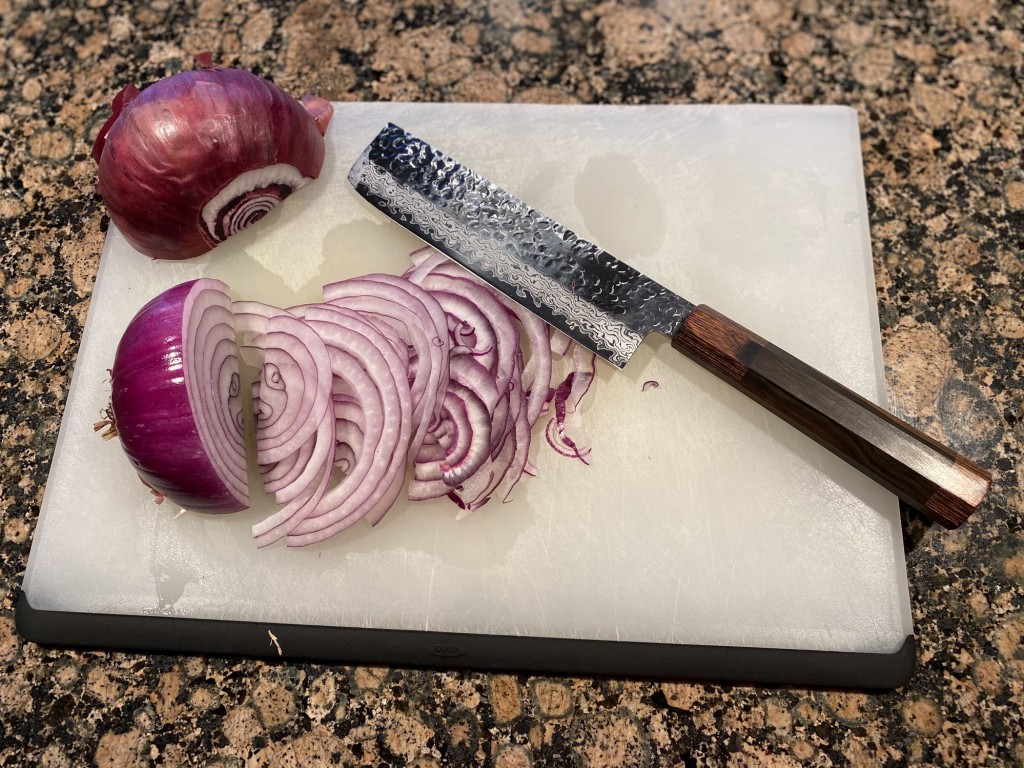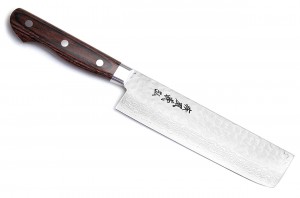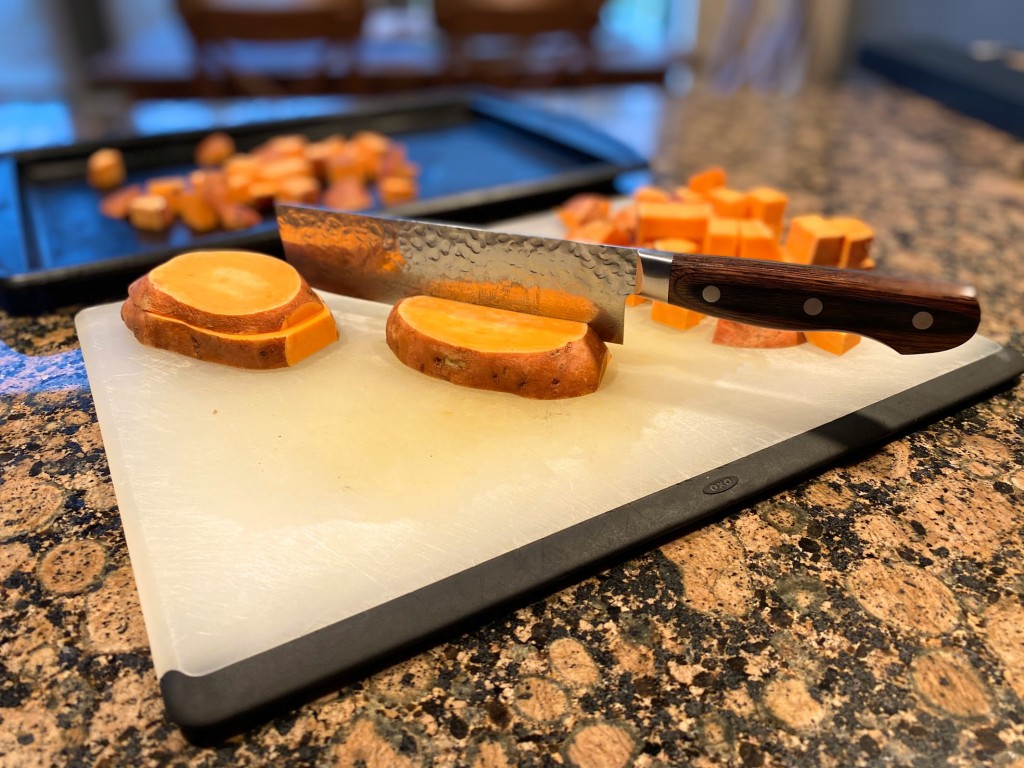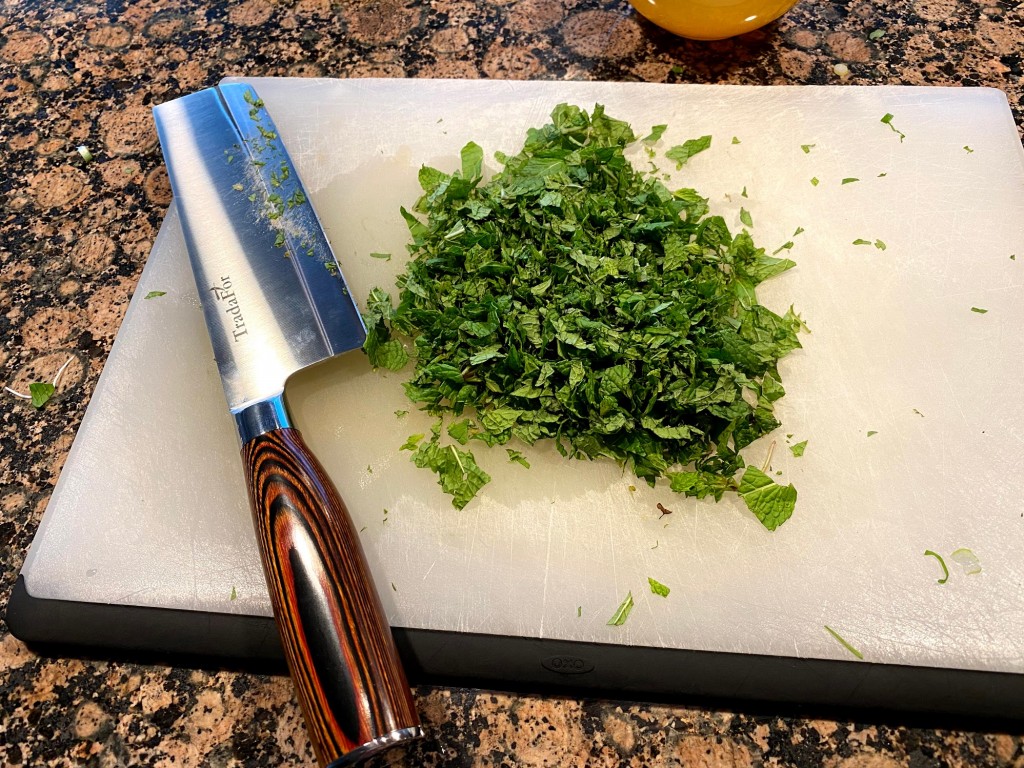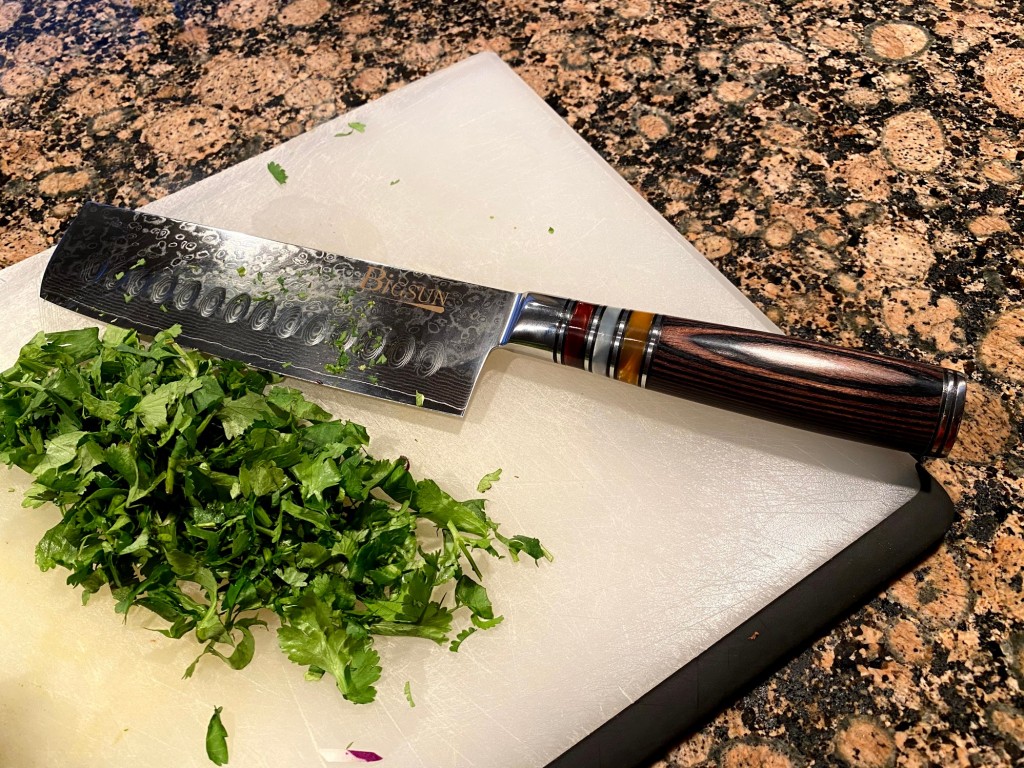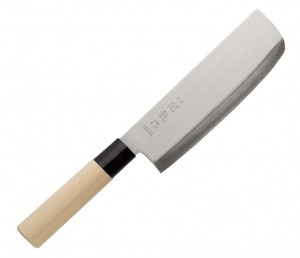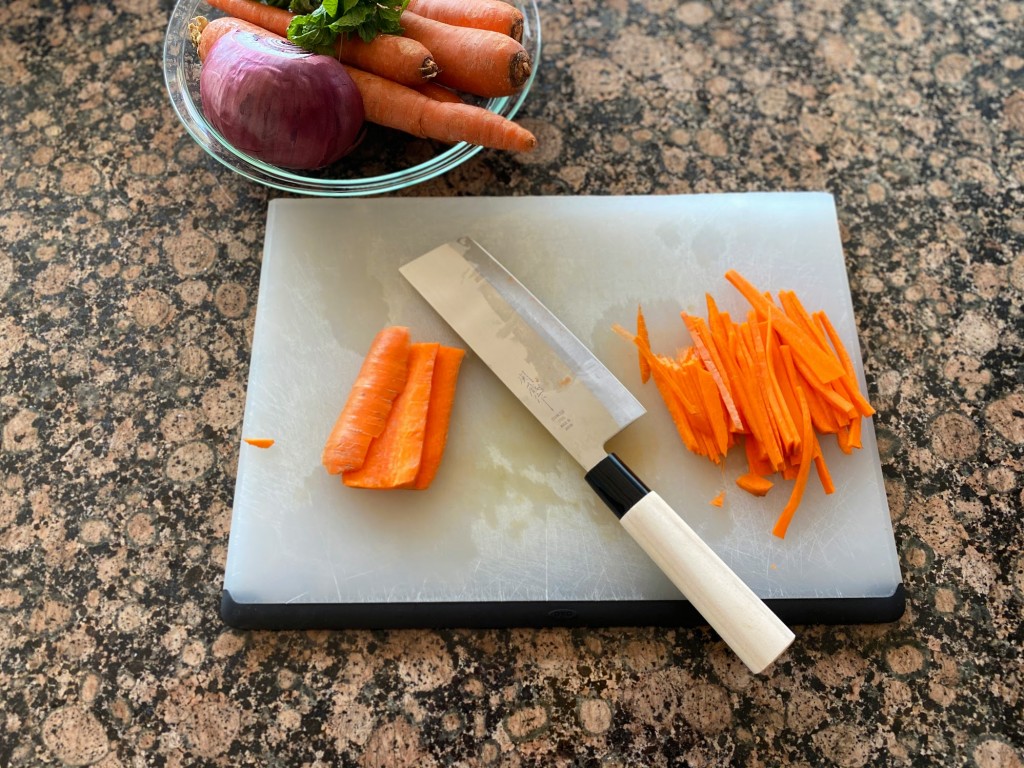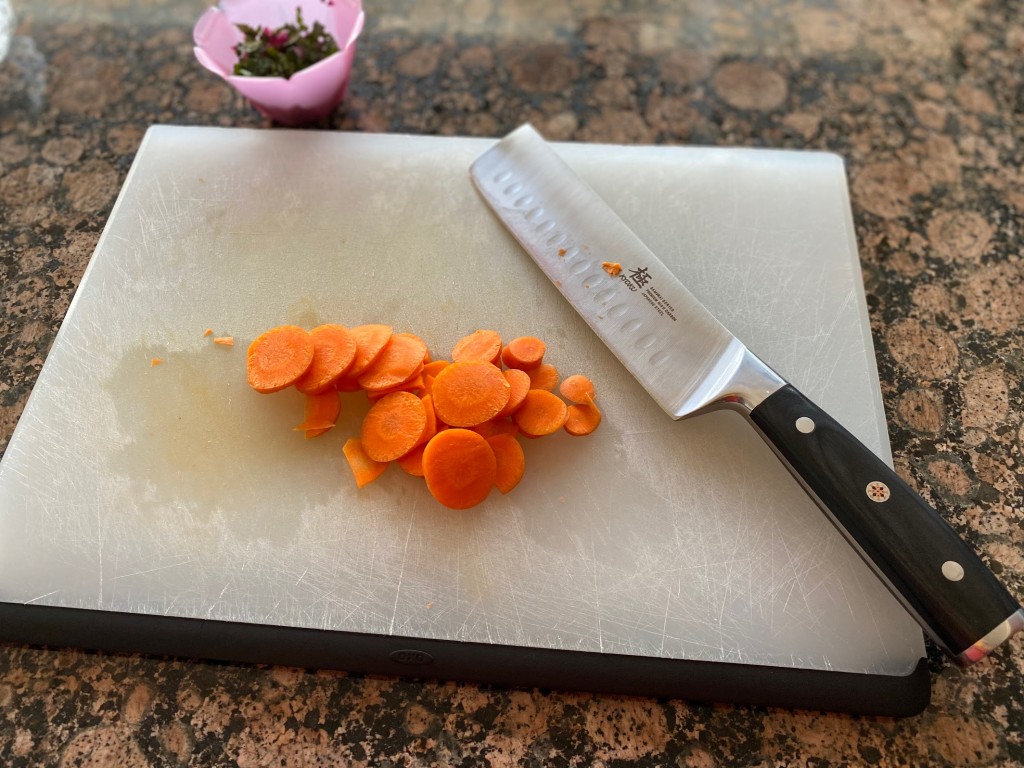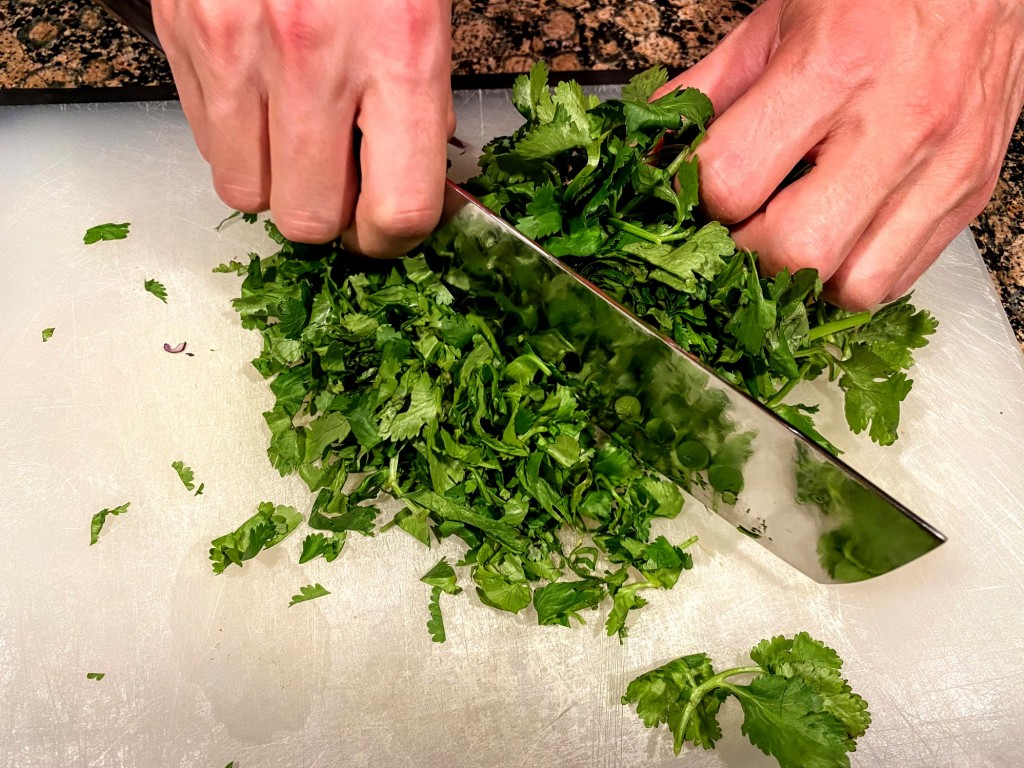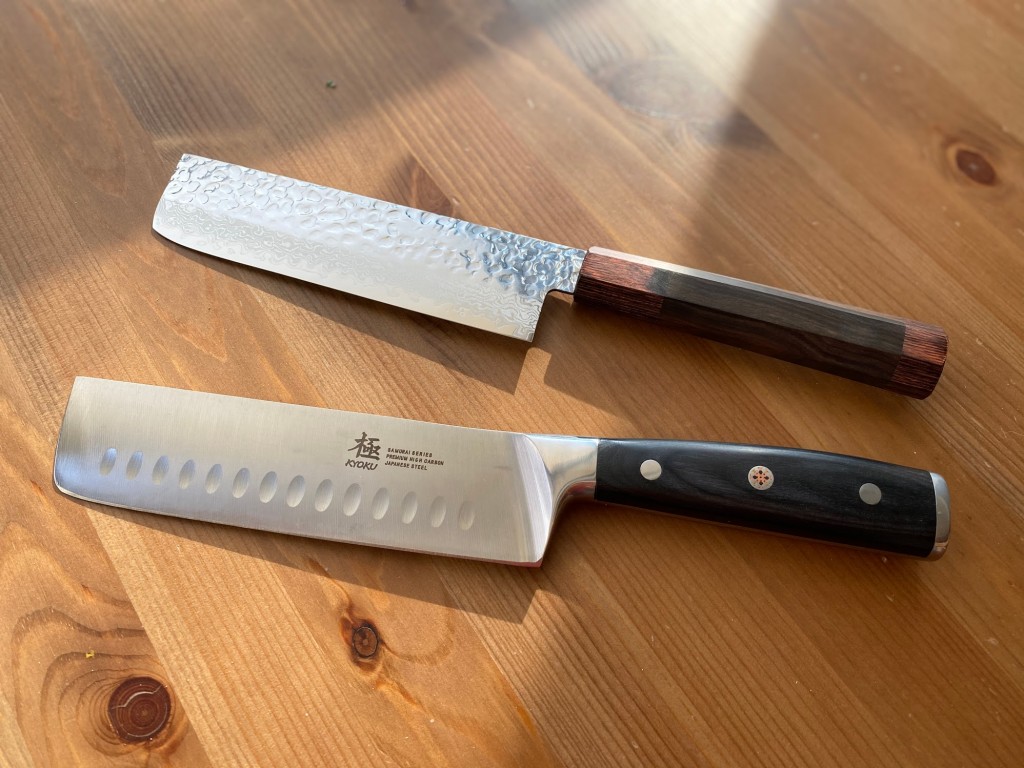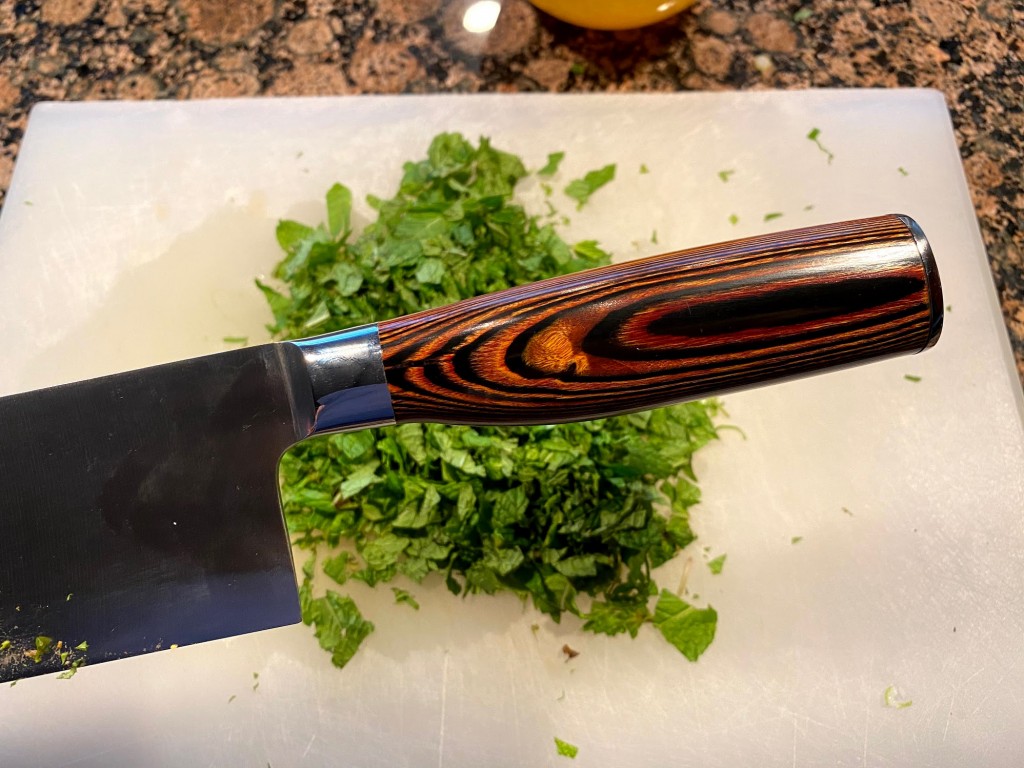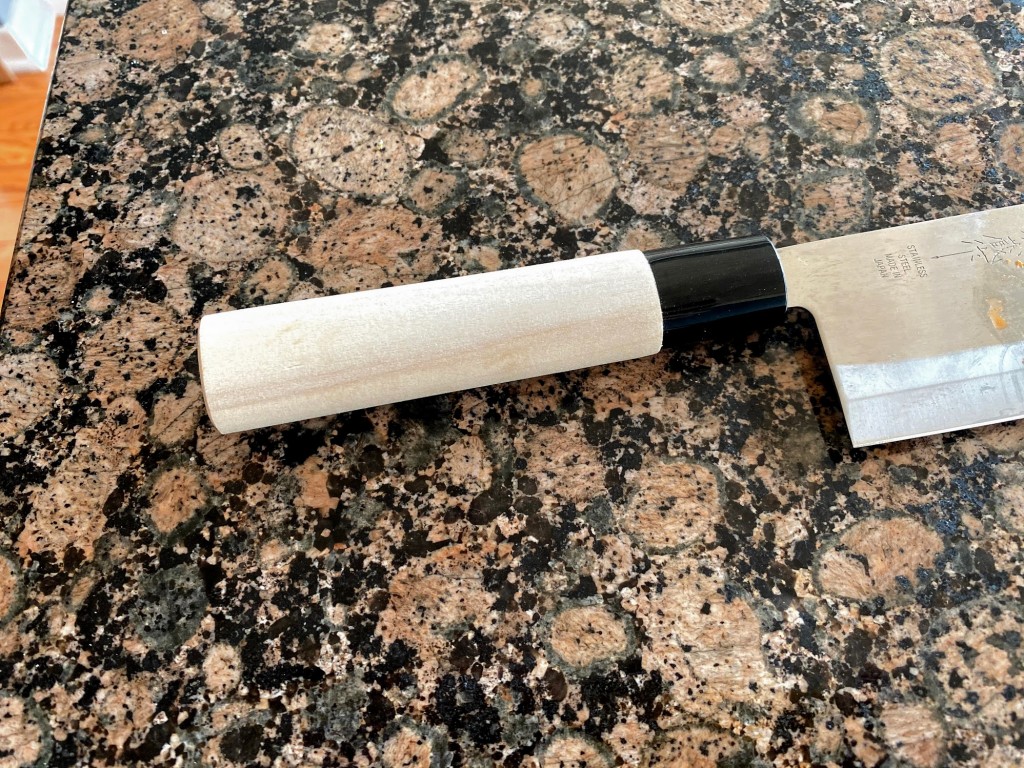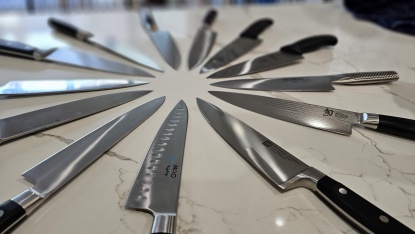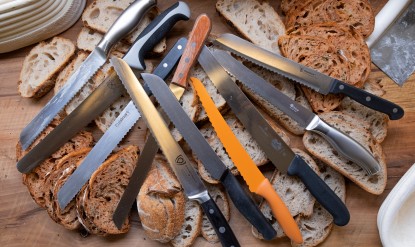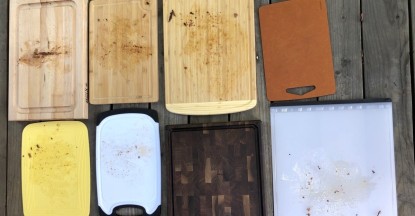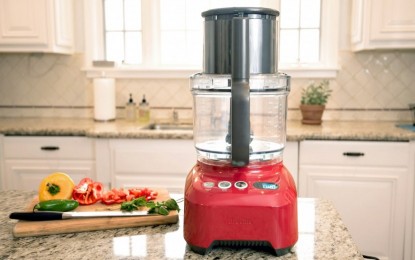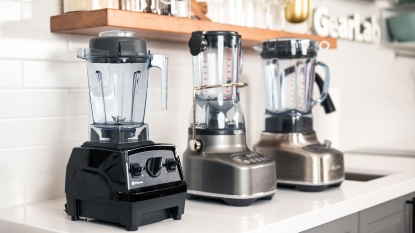Looking for the best nakiri knife available today? We researched over two dozen options before purchasing the 9 most promising to put through our rigorous, hands-on testing. We know that there are a lot of options out there, so we've chopped through the noise to find the top contenders on the market. Whether you are a novice in the kitchen or the next Iron Chef, this review can help you find the right nakiri knife for your needs. From cutting ability to balance to durability, our expert reviewers take a look at several critical factors that determine the quality of these models and put each one on the chopping block.
Quality culinary tools can really make your cooking experience more enjoyable. A sharp knife is no exception! We've put a variety of styles of knives to the test, including the best chef knives, sharpest bread knives, and best santoku knives. We also have tested tons of cookware and accessories to round out a solid kitchen setup including the top-rated knife sharpeners, best sous vides, best woks, and the best cast iron skillets.Our Top Picks
The Shun Premier 5.5-Inch is a high-quality blade and comes razor sharp right out of the box. This forged knife is well-balanced, with the center of mass just about a quarter of an inch toward the blade, making it easier to control. It proved again and again that it could handle all of the chopping tests that we put it through. It is comfortable to hold, and the hammered Damascus finish also makes for an aesthetically pleasing product.
We were hard-pressed to find shortcomings to complain about with this nakiri. However, we will mention that while the finished handle is durable, you must treat the blade itself with proper care. There is also the issue of price. Unless you manage to find a great sale, this nakiri knife will set you back a pretty penny. All things considered, we would choose the Shun Premier over all others for its excellent blade and solid ergonomics.
The TUO Osprey chops above its price point. Ours came razor sharp right out of the box. It dispatched hard vegetables like carrots with ease and was gentle enough on herbs that we didn't notice much bruising. The full-tang blade gives this knife a hefty feel, and it is well-balanced, reducing the amount of effort required to chop. The bolster is large and gently sloped, making it easy to find a comfortable grip.
Given the price, there are only a couple of minor issues that we had with this knife. The blade itself is somewhat thick, so it misses out on some finesse. The pakkawood handle also feels ever so slightly rough, and it lacks the smooth finish of our favorite knives in the review. However, if you want a starter nakiri knife with a sharp blade at a reasonable price, this one won't disappoint.
The Yoshihiro VG-10 46 Layer Hammered Damascus is a lightweight knife that carries a powerful chop. This double-bevel blade has a soft hammered Damascus finish with a mahogany and redwood handle and a magnolia blade cover. The thin, partial-tang edge maintained its razor-sharpness and had no problems julienning carrots or chopping onions or herbs.
Similar to other knives in its class, this one typically comes at a premium price. It also requires a high degree of care so that the edge doesn't get dinged, and the handle doesn't appear to be fully waterproof, so it will weather over time. If you prefer a knife that feels light but doesn't sacrifice performance, you can't go wrong with this one.
The Shun Classic is a mid-weight, reliable nakiri knife that is comfortable to use. We found that this model sliced through onions like butter and tackled carrots with minimal effort during testing. At 7.5 ounces, it is slightly heavier than the other top blades in this review. The notch of the forged bolster is comfortable to hold, and the finished handle is easy to clean and durable.
Some chefs may not enjoy the heft of this model. It is by no means overwhelming, but the heavier handle and thicker blade are noticeable. It is comfortable to hold for righties, but the handle is asymmetrical, so a left-handed person may not find it quite as forgiving. However, if you want a razor-sharp knife with a little extra weight behind it, this one will treat you well.
The Yoshihiro VG-10 16 Layer Hammered Damascus gets the job done. If you are a fan of western-style handles, this knife combines the best of a razor-sharp nakiri with a grip one might find on a chef's knife. This full-tang model is well-balanced, with a center point about a half-inch toward the blade. It is lightweight overall and has a slender blade that moves through onions and herbs with ease.
Unfortunately, the bolster is somewhat uncomfortable. The stamped blade and handle join awkwardly in a manner that pinches and rubs on the user's index finger. Although highly effective, its performance on root vegetables does lag somewhat behind other top models. That said, we highly recommend the Yoshihiro VG-10 if you are used to a chef's knife and want a similar feel in your hand while trying out a nakiri knife.
The TradaFor Usuba is worth considering if you want a decent blade on a budget. It has a fine blade that charges through onions and herbs and can handle softer veggies like yellow squash. The bolster is comfortable, and the finished pakkawood composite handle is durable. It has a generally pleasant hand feel, with a slightly blade-forward balance.
To be very clear, this model does not measure up in the same way as any of the other award winners. The single bevel reduces versatility, and though its performance is better than we expected given the price point, there is a sizable gap between it and the next blade up. It is comparatively heavy, which limits the user's ability to make very precise cuts. However, if the other top contenders are just unreasonably priced, we think that this one will offer more than you pay for.
The BIGSUN Usuba 7-Inch is a mid-range knife with decent handling. The steel blade is durable, and the composite handle is easy to maintain. It made easy work of onions and herbs during testing, with decent performance on sturdier root vegetables. It has a dimpled lower half, which reduces friction and the amount that food sticks to it.
The weight makes this knife a little less desirable. At 8.8 ounces, it's nearly 50% heavier than most high-end models we tested. The bands of resin near the bolster also mean that the handle is not completely smooth, which can feel uncomfortable and abrasive for extensive chopping. It is a decent option for those who value aesthetics but don't want to break the bank.
The Happy Sales HSSR200 is a bargain basement option. It performed better than expected during each round of veggie and herb chopping. It holds an edge better than some other blades in this review. It is very lightweight, which makes it a serviceable option for a wider range of users. It can also typically be found at a very reasonable price.
As the saying goes, you get what you pay for. The handle of this knift is roughly cut — it is noticeably (unintentionally) asymmetrical. The partial-tang blade appears to be glued into the handle, and the plastic bolster looks cheap. Furthermore, the wood is unfinished, making it far more susceptible to weather, splintering, and water damage over time. And yet, when considering everything, this knife performs better than some of the pricier models we tested. We think it's an excellent choice for someone who wants to decide if they like the style of a nakiri knife before throwing down more money on a greater investment.
The Kyoku Samurai Series is a high-carbon steel knife. It is balanced reasonably well and is fairly comfortable, owing to its forged bolster. The pakkawood composite handle is riveted, easy to clean, and requires little maintenance.
This nakiri knife is about as heavy as they come. The blade is thick, and the entire knife is rather unwieldy. We found that it makes imprecise cuts, and firmer vegetables like carrots tend to guide the direction of the blade instead of the user controlling it. We would only recommend this knife to those who enjoy a much heavier hand feel and are willing to spend time sharpening it before use.
Why You Should Trust Us
The sharper the blade, the cleaner the cut. We rigorously tested each of the knives in this review, cutting carrots, onions, and herbs. We julienned and chopped, looking to see how precise, consistent, and delicate each blade is with different kinds of produce. We test the balance of each model and assess the comfort of the grip and durability of the blade and other materials.
At GearLab, we buy all of the products that we test at retail prices. Lead reviewer Ben Applebaum-Bauch has over five years of experience in commercial kitchens. He has chopped, sliced, and julienned thousands of pounds of produce and served dining rooms seated for over 200 people. In addition to his 30 years of experience as a seasoned home cook, he also oversaw the processing and production of thousands of meals for wilderness backpacking trips. Growing up in a family that bonded over cooking, he has been using knives of all kinds for much of his life, and his experience has taught him the value of a quality knife.
Analysis and Test Results
We assess these blades in four metrics, conducting the same tests for each product. Cutting, balance, comfort, and durability make up the total performance for each model.
Cutting
Nakiri knives are primarily designed for cutting vegetables. For this metric, we look at the sharpness of the blade out of the box and its precision in processing veggies. We chopped carrots, onions, and herbs while looking for consistent performance from veggie to veggie.
The top contenders are all relatively lightweight with thin blades that are, unsurprisingly, incredibly sharp. The Shun Premier and Yoshihiro 46 Layer are both ahead of the rest. They sliced through firmer root vegetables with no problem, and our testers felt that they had full control of these blades with every chop. Just behind are the Shun Classic and Yoshihiro 16 Layer, which both cut through onions like butter and sliced through delicate herbs while keeping them looking fresh and unbruised. The affordably priced TUO Osprey performed well here, too.
There is a fairly steep drop-off in performance to the second tier, but still a couple of pleasant surprises along the way, including the Tradafor Usuba and the Happy Sales HSSR200, which both had decent edges and performed better than expected. At the bottom of the class, the BIGSUN Usuba, and Kyoku Samurai Series have comparatively thick, dull blades that don't provide enough control to make precise cuts.
Balance
Balance pertains to the centerline of mass on each product. That is, if you rest the knife on, say, the edge of a knife block, at what point along its length will it remain balanced?
During testing, we found that the majority of the knives are blade heavy, meaning that the balance point is somewhere along the blade. These include the Happy Sales HSSR200, Yoshihiro 16 Layer, TradaFor Usuba, Shun Premier, Yoshihiro 46 Layer, and BIGSUN Usuba. This makes sense for a nakiri knife that is primarily meant for chopping.
Having the weight more towards the blade offers a more powerful cut (perhaps at the expense of precision). In practice, we found that the best-balanced blades were the ones that had their lines about a quarter to a half-inch forward of the bolster (the point where the blade meets the handle). These are the Yoshihiro 16 Layer, TUO Osprey, Shun Premier, and the TradaFor Usuba.
Centered models, with balance points right at the front bolster, include the BigSun Usuba and Shun Classic. These models were adequate but provided noticeably less 'power' relative to their weight. We also discovered one handle-heavy knife in the bunch — the Kyoku Samurai Series, which is poorly balanced and heavy, making it difficult to control.
Comfort
Comfort is about the shape of the handle, as well as its materials. After a cutting session, it's the total experience of how your fingers, hands, and wrists feel. After hundreds of cuts, will you have blisters, or will your fingers live to slice another onion?
We found that models with finished handles and fewer materials tended to be more comfortable. Forged blades (as opposed to stamped) also provided a smooth, more comfortable curved surface to rest an index finger. The Shun Premier has a nice hand feel. It is comparatively lightweight and has a forged metal bolster with a nice curve. The TUO Osprey has a large, gently sloping bolster that allows for a variety of comfortable grips. We like the Yoshihiro 46 Layer because it combines a nice average weight with an octagonal rosewood and mahogany handle that is nice to hold. The forged blade of the Kyoku Samurai Series is also comfortable to grip, but the blade is very heavy, leading to joint soreness in the long run.
Other reasonably comfortable blades include the forged BIGSUN Usuba, though the multiple rings of resin near the bolster of the latter knife can be a little abrasive. Toward the bottom, the Yoshihiro 16 Layer is equipped with a bizarre western-style wooden handle and metal bolster that can pinch and rub against skin through repeated use. The Happy Sales HSSR220 has an unfinished wooden handle and a plastic bolster that makes for a fairly uncomfortable grip.
Durability
Durability is about how long a knife will last past its first chop. To maximize longevity, nakiri knives typically need to be treated with care, regardless of a model's overall quality. Blade sharpness and hardness are key, as are the materials of the handle and overall construction quality. However, there is evident craftsmanship in some blades, while it lacks in others — this makes the difference in this metric.
Many of these knives are made with a finished pakkawood handle. This wood/resin composite is meant to add durability and water resistance to what would otherwise be a part of the knife that was prone to wear.
In our testing, we discovered that some of these knives may not stand up to frequent use as well as others. The Yoshihiro 46 blade is thin, and the handle is finished but not fully waterproof, meaning that it is more susceptible to expansion and contraction in varying temperatures and humidity levels. The Happy Sales HSSR 200 is made with an unfinished wooden handle that feels cheap and a plastic bolster with a light blade glued into place.
Conclusion
When it comes to knives, there are a lot of options out there. Whether you are a lifelong cook or are looking for your first nakiri knife, we hope that this review has you on your way to chopping veggies for your next stir fry, stew, or roast. Bon Appetit!
— Ben Applebaum-Bauch


